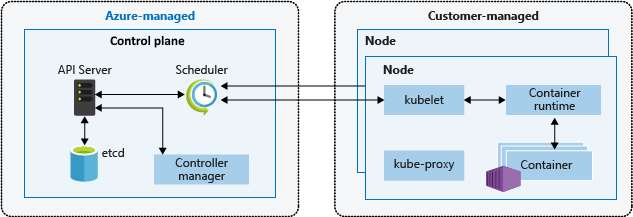AKS free tier
Last week the free tier for Azure Kubernetes Service was announced. Although it is correct, it also requires elaboration.
Kubernetes and other container management technologies consist of various components. Most important for cost are the two types of nodes: managers and workers. These are relevant because commercial vendors may charge a license fee for nodes. And in the cloud you pay as you go for compute, storage and network capacity, so that can be another cost item. When three management instances per cluster are required for availability, these cost of machines plus licenses can add up. So one optimization AKS did, was to design the managed service so that managers were out of the customer’s control, including maintenance and cost, and could be optimized for multi-tenancy.

Side note: If you have never deployed a Kubernetes cluster manually, you should definitely do it once using this step by step guide. And then throw it away to never do it again. :-) That process will teach you a lot about Kubernetes and you will appreciate managed Kubernetes services even more.
When AKS started, and even before with Azure Container Service, the management instances were free. And since Azure SLAs are financially backed, meaning you may get money back when the service doesn’t behave as described, there also wasn’t an SLA for AKS. This is great for anyone wanting to experiment, not so much for enterprises. Remember, you still paid for compute, storage and network of the worker nodes, which are virtual machines or VM scale sets with SLA. So even if the control plane of the masters would be down, the deployed workloads continued to run. Eventually a paid option for AKS was created where customer pay in return for an optional uptime SLA for the managed control plane. The change that was announced last week introducing free and standard tiers, make the choice more explicit.
So did anything else change? Well the AKS product group are very active and open. Lots of excitement happening.
When you are considering AKS for production use, look at the baseline architecture for AKS as a starting point. PS: I could do separate posts about AKS PPS: I could add specific AKS cost management options here
To read more about cost management, check out this post.
Thanks for reading! :-)
